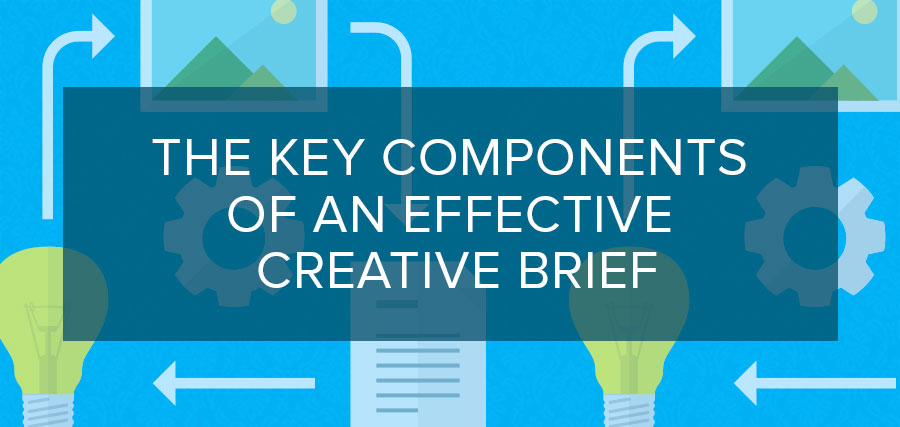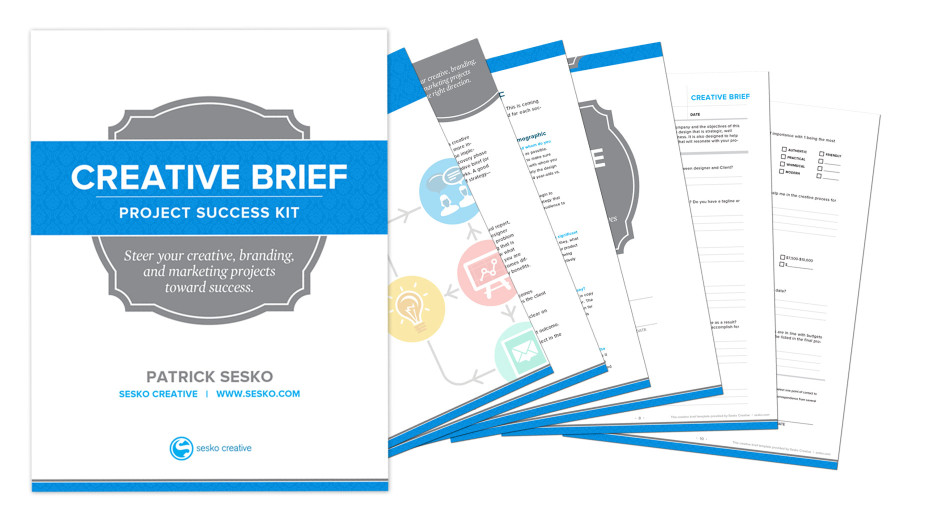So, you are ready to move forward on that big project (brand identity, annual report, website, ad campaign, etc.) yet you are not sure where to begin. You tell your designer what you want and he goes forth and designs it with little to no information. The problem is that he doesn’t have a shred of information that will help him create something that is going to be effective, if at all usable or suitable for your audience. He won’t know what resources to use because he doesn’t know your budget. He doesn’t know whom you are targeting so it’s a shot in the dark to create something that will be effective for that specific market. That’s where a creative brief comes in.
What is a Creative Brief?
A creative brief is a living-breathing document that serves as a road map for a creative project. It can be a formal document that is comprehensive, usually for larger more in-depth projects or can be as simple as a basic outline. A creative brief can be implemented by the designer OR the client. A good designer will use one in the discovery phase of a project to gain insight and to establish parameters of the project. The creative brief allows you to check your progress against scheduling benchmarks. A good brief will also tell you when you are getting off track—either over budget, or off strategy—and reel you back in to being in line with the projects’ objectives.
(This is written from the perspective of the designer, but can easily be implemented by the client)
Elements of a Creative Brief.
Following are some of the main elements of a creative brief that I use. You can get as detailed as needed for each section to ensure success for each project or initiative.
Company Background – Who Are You?
What does the client or company stand for? Maybe a mission statement if they have it, or what their values are. Find out if they have a standards guide and study it. Why are they in business? What problem are they trying to solve for their customers?, etc.
Identify Key Decision Makers
Who are the point person(s) for the project. You don’t want to have to coordinate with multiple decision makers, and have to audit comments and edits, etc. This is a very important step and will save you time and headache down the road—both for the designer and the client. Also, it is important to know who compiled the brief. If there are any discrepancies in communication, there will be a paper trail and you will be able to identify where the breakdown occurred, and course-correct.
Project Description
What is the project? Be specific. Is it an annual report? If so summarize what the project is and then get detailed on the different components of the project. Will photography be provided or will you have to organize a photoshoot. Will the client provide final, edited copy or will there be a need to hire a writer? What platform will it be delivered on? Is it print, web, digital magazine? All of the above? The more detailed you get and break everything down, the less chance there will be surprises along the way. If you are as detailed and clear as possible, your project will run more smoothly.
Project Objectives
What is the purpose of this project? Is it meant to inform? Is it meant to sell something? Is it meant to create brand awareness? What action do you want people to take? Find out exactly what it is you want to achieve with your project. This is a good time to find out if you, as the client are trying to achieve too many things with one project, thus rendering it ineffective. It’s best to narrow down to something specific. Doing so will help to manage expectations on both sides.
Target Audience or Demographic
Who will be seeing this project and whom do you want to take action? Be as specific as possible. It is important to know this because you want to make sure that your design and content strategy appeal to whom you are trying to reach. Surely the design and strategy will be different for 20-somethings vs. Octogenarians.
From this information you can begin to develop ideas for a content/design strategy that will be effective in getting your target audience to behave the way you want them to.
Competition
It is important to know if your client has significant competition in the same space. Who are they? How are they different from your product or service? Are they better? Worse? Why? Knowing about your competitors will enable your designer to more effectively differentiate you from them.
Grab a copy of my creative brief
Tone/Voice
What is the overall personality of the company? Not only is tone reflected in design, but also in copy writing. In fact these two should work together seamlessly. The tone of the copy should match the design tone for maximum effectiveness. Its important to get this right as you don’t want to misrepresent the clients’ best interests.
Criteria for Success
It is important to find out what criteria the client will use to deem the project a success. Is success defined by more widgets sold? Is it more email sign-ups? Is it to get people talking on social media? Make sure the criteria for success and the project objectives are aligned, and if at all possible, measurable.
Design Preferences.
What type of design elements appeal to the client. Do those preferences align with their mission or voice? What colors do the client prefer or dislike? Make sure they have a reasoning that is based on strategy. In the end, a portion of design is subjective and if you simply cannot have a color or specific element in your design, that’s fine. Just make sure that you design for the success of the project. Remember, you are creating for your target audience, and not for yourself or your peers.
Also, Have your client identify a brand or a product or two they like and have them explain why. How do those bands or products make them feel? This will help the designer create something that will appeal to the client as well as their audience.
Managing Expectations
What does your client expect your project to do for their business? If your client supplies a laundry list of unreasonable outcomes, then its time to reel them in to reality. Explain to them what to expect out of the project. This will help keep the scope of the project manageable, and keep both parties happy.
It is also import for the client to understand that a single project can and should achieve a focused one or 2 objectives. This will allow the concept to be more focused and successful. If you try to do too many things with one piece, then the success will be diminished, as the message will be diluted. Make sure the client is aware that one project (a brand identity for instance) will not solve all the needs of a business. For example, a business can be very successful yet still have a horrible and ineffective brand identity. Alternatively, a company that is failing and on the verge of bankruptcy can have a great brand identity. It is merely one portion of the marketing/branding machine.
Company Future
Where does the client see their business in 5 or 10 years? Will they ever consider selling their company? Will they expand their services? It is important to see what the long term intentions are of a company in order to prepare for those changes down the road. For example if your plan is to sell your company down the road, you might not want the company name to be YOUR name as that will have no value to the prospective buyer and you would have wasted time and money on building brand equity in a name that will be useless to someone else.
Word Bank
This allows the client to list or select a few keywords that best describes their company and values. This is very important to help guide the tone of voice and design. If the client was a conservative financial services company, you probably wouldn’t want to design something that was more edgy or “punk rock.” That may seem obvious, but all to often I see designers and business owners alike designing in a style that isn’t suitable for their business.
Additional Input
A place to gather any other comments or concerns. Also a place for a client to supply examples of what they like. Maybe the way a navigation menu works on a specific site, or how an annual report was produced using specialty papers and printing techniques—anything that will help with the process that doesn’t fall into the other categories. It could be positive press you had, or maybe a specific set of data—perhaps from a survey you administered. Include a brand or style guidelines if it is available. Include initial ideas that can be used as brainstorm starters. Provide the designer a list of assets that can be utilized for the project (photography, logos, existing collateral, etc.)
Budget
I cannot stress how important it is to know what your budget is. A project’s trajectory will more often than not be determined by budget. For example, you don’t want to end up going down a design rabbit hole only to find out you cannot afford production. Having concrete numbers to work with will allow your designer to utilize resources based on budgetary restrictions. Knowing what your budget is as a client will also show your seriousness about your intentions. I talk more about the importance of budgets in this post on my blog at Designing for Budget.
Timeline/Schedule
Compile a detailed listing of project deliverables, when they are due, and who is responsible for each. It’s good to break it down into manageable milestones to keep the project moving along. Timelines always change so update as necessary.
Delivery
Both client and designer must be crystal clear on what the exact deliverables are—again to avoid surprises towards the end of the project. An example would be a designer designing a website for a client and assumptions are made that the client will secure the development when the client assumed the designer would do the development. This is a pretty severe breakdown in communication, but I use this to illustrate the importance of managing expectations on both sides, no matter how trivial.
If you use this as a guideline for your own creative brief, you will make your project run smoother. I have seen these done very simply, and I have seen them dozens of pages long. Use what portions work for you. The creative brief will help both parties stay focused on the project objectives and will be a document you can turn to if the need arises.
What has been your experience using creative briefs?


